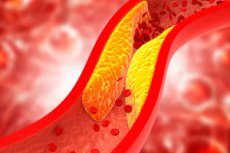
20 May 2024, 15:32
《新英格兰医学杂志》发表的一项研究表明,对于急性中风和大面积梗塞的患者,血栓切除术结合药物治疗可带来更好的功能结果并降低死亡率。
法国蒙彼利埃 Guy de Chauliac 医院的医学博士 Vincent Kostala 及其同事将近端前循环脑血管闭塞且在症状出现后 6.5 小时内通过磁共振成像或计算机断层扫描检测到大面积梗塞的患者分配到血管内血栓切除术和医疗护理(血栓切除术组;166 名患者)或单独医疗护理(对照组;167 名患者)。
由于类似的试验结果更利于血栓切除术,该试验提前终止。研究人员发现,约35%的患者接受了溶栓治疗。90天时,血栓切除术组的改良Rankin量表评分中位数为4分,对照组为6分(总比值比为1.63;95%置信区间为1.29-2.06)。
90天时,血栓切除组的全因死亡率为36.1%,对照组为55.5%(调整后的相对风险为0.65;95%置信区间为0.50-0.84);有症状的颅内出血患者比例分别为9.6%和5.7%(调整后的相对风险为1.73;95%置信区间为0.78-4.68)。
作者写道:“在症状出现后七小时内使用血栓切除术结合医疗护理,与单独使用医疗护理相比,随机分组后 90 天的改良 Rankin 量表评分较低。”
该研究由蒙彼利埃大学医院通过医疗公司联盟(美敦力、史赛克、Balt Exclusion、MicroVention 和 Cerenovus)的无限制资助提供支持。

